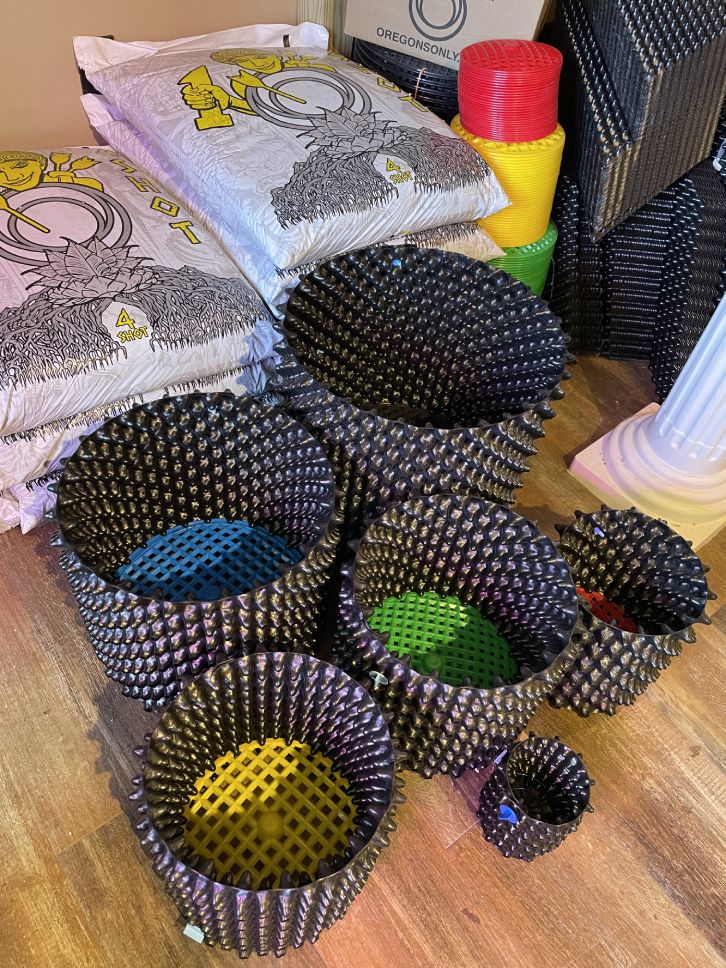Opening the Possible of Hydroponics: Understanding Its Utilizes and Various Types
Hydroponics, a technique of growing plants without soil, has amassed increasing attention for its prospective to change agriculture and horticulture methods. The accuracy control over nutrient distribution, water usage, and environmental aspects supplies a glimpse into a future where food production can be maximized in various settings. As we navigate through the elaborate landscape of hydroponic systems and methods, it comes to be noticeable that each approach holds distinct advantages and restrictions. By unwinding the varied usages and sorts of hydroponics, we can reveal a globe of opportunities that might improve just how we picture lasting farming and horticulture techniques.
Benefits of Hydroponic Systems

One more benefit of hydroponic systems is the capacity to grow plants in a smaller sized space. By getting rid of the demand for dirt, plants can be grown up and down or in stacked systems, making the most of making use of available space. This is especially advantageous in metropolitan areas or regions with minimal cultivatable land. Hydroponic systems decrease the risk of soil-borne diseases and parasites, as there is no dirt to nurture these risks. This results in healthier plants and decreases the need for hazardous chemicals, making hydroponic farming an extra eco friendly and sustainable alternative.
Common Makes Use Of in Farming

Given the efficient water conservation and space-saving benefits of hydroponic systems, it appears that these ingenious farming techniques have actually discovered typical usages in numerous fields of farming. In traditional agriculture, soil-based farming can be land-consuming and labor-intensive. Hydroponics uses a remedy by permitting plants to be expanded without dirt, reducing water usage by up to 90% compared to conventional farming methods. This makes hydroponics particularly ideal for areas facing water deficiency or minimal cultivable land. The controlled environment of hydroponic systems makes it possible for year-round farming, offering a consistent supply of fresh fruit and vegetables no matter of external climate problems.
Hydroponics is commonly made use of for growing a selection of crops, including leafy greens, tomatoes, cucumbers, strawberries, peppers, and natural herbs. Its convenience reaches upright farming, urban farming, and greenhouse manufacturing. Furthermore, hydroponic systems are made use of in research and academic setups to study plant development, nutrition, and growing techniques. The versatility and effectiveness of hydroponics make it a valuable tool in contemporary farming, addressing the difficulties of sustainability, food protection, and resource optimization.
Exploring Various Hydroponic Strategies
Hydroponic systems provide an array of methods that provide to different plant kinds and cultivation objectives. Additionally, the Ebb and Circulation system, also recognized as the Flood and Drainpipe system, intermittently floodings the plant origins with nutrient option, permitting for oxygenation during draining pipes periods. Each of these methods showcases the versatility and performance of hydroponic systems in enhancing crop development and yield.
Contrasting Various Hydroponic Solutions
Discovering the efficiency and return improvement techniques in hydroponics leads us to compare different hydroponic systems available for crop growing. Each hydroponic system has its unique functions, benefits, and limitations, making it critical for growers to choose one of the most suitable system based on their certain demands and constraints.
One of one of the most usual hydroponic systems is the nutrient movie technique (NFT), where a thin movie of nutrient remedy continuously flows over the plant roots. This system is valued for its water performance and viability for growing leafy eco-friendlies and natural herbs. In comparison, the deep water society (DWC) system submerges plant roots straight right into the nutrient remedy, providing ample oxygen and nutrients. The DWC system is cost-effective and fairly easy, making it a prominent selection for newbies.
One more preferred hydroponic system is the ebb and flow (or flooding and drainpipe) system, which periodically floods the plant roots with nutrient service before draining it. By comprehending the differences between these hydroponic systems, growers can make enlightened choices to make the most of plant return and top quality.
Technologies in Hydroponic Modern Technology
One read the full info here vital innovation is the advancement of wise hydroponic systems that make use of sensing units and automation to monitor and change environmental problems such as pH degrees, nutrient focus, and light direct exposure in real-time. These systems enable accurate control over growing conditions, leading to ideal plant development and greater plant returns.
An additional remarkable advancement is the integration of vertical farming techniques with hydroponic systems, enabling the growing of plants in piled layers. This upright technique makes the most of area use, making it suitable for city settings where land schedule Learn More is restricted - The Indoor Earthworm. In addition, making use of sophisticated LED illumination systems customized to particular plant demands has improved power performance and boosted development rates in hydroponic setups
Technologies like these are driving the advancement of hydroponics, making it a extremely attractive and lasting alternative for contemporary agriculture.
Verdict
To conclude, hydroponics offers countless benefits in agriculture and has numerous methods and systems that can be utilized to optimize its capacity. Innovations in hydroponic modern technology remain to improve efficiency and sustainability in food manufacturing. By comprehending the usages and different kinds of hydroponic systems, farmers and cultivators can open the complete capacity of this innovative technique of expanding plants without dirt.
In addition, hydroponic systems allow for far better control over nutrient levels, pH equilibrium, and environmental conditions, leading to much healthier plants and higher returns.
